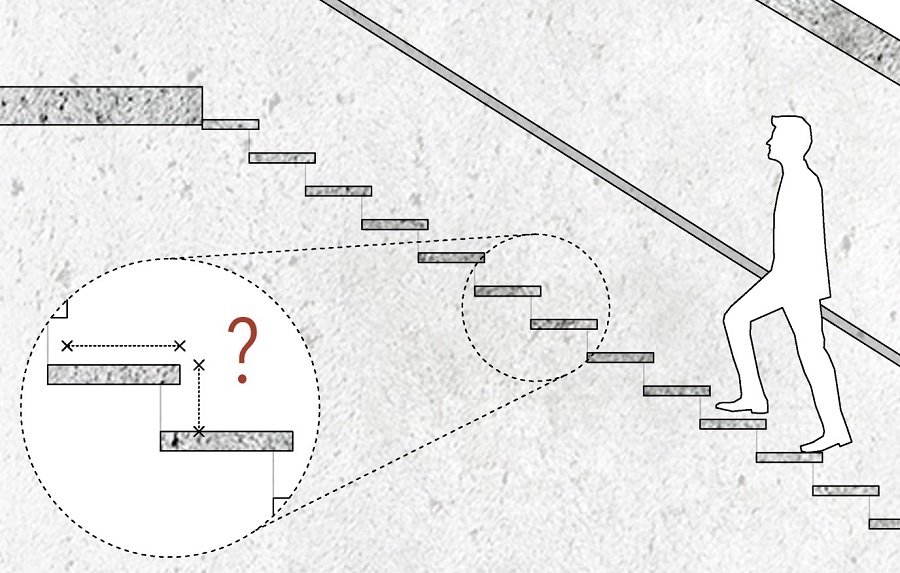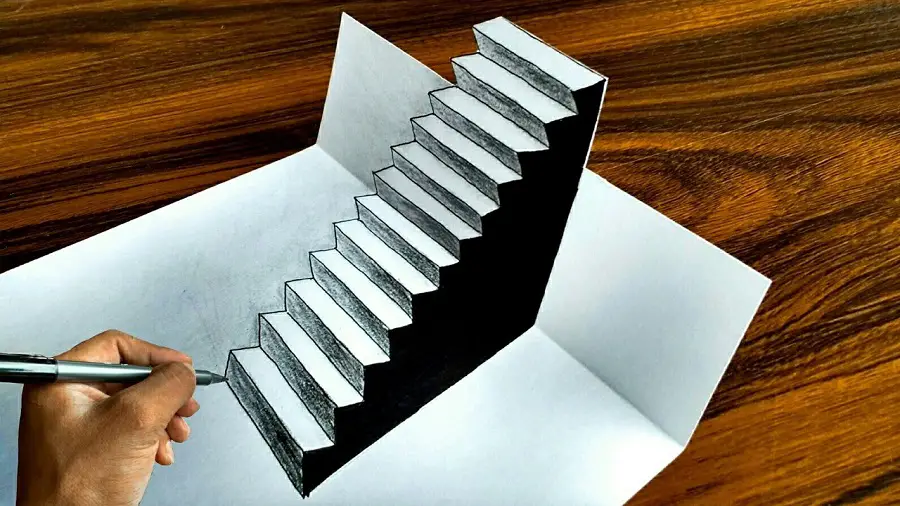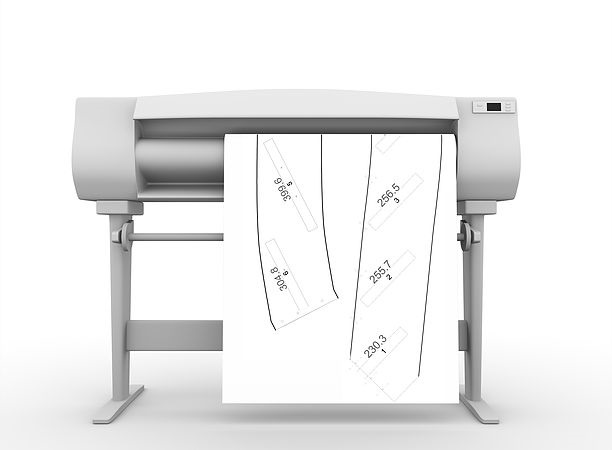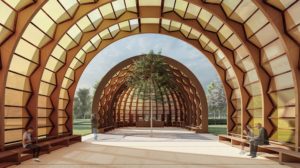When building an interior staircase, even if you start from the same measurement data, design, safety or ease of access are all part of the equation and can radically change the final result. By using a staircase design service you can see the end result before it's too late. With this service you can visualize the staircase in 3D format and assess, before it's built, whether the chosen design suits the style of the house, fits into the space available, is easy to climb up and down. This service is brought to you by Dipproject, experts in wooden staircase design and certified members of International Ladder Manufacturers Association in the USA.

Things to consider when designing a staircase
At first glance it all seems simple; after all, it's a simple ladder! What can be so difficult that it takes a project to get from level A to level A+1? And yet it is not that simple. There are laws, rules and regulations that must be followed to make the ladder easy and safe to use.
A poorly constructed ladder, if not leading to immediate accidents, can over time lead to real health problems, back or knee pain. The way a ladder is made starts primarily with the human anatomy. It determines how high the riser should be, how wide the treads, how high the handrail should be, or how high you should be from the staircase to the ceiling.
It was the French architect, mathematician and military man who devised the first formula for calculating stairs Nicolas-Francois Blondel who lived in the 17th century. Formula
2H (cm) + l (cm) = 59....65 cm
where H is the height of the riser and l is the width of the step, is still valid today and is also used in the Romanian standard regulating the construction of stairs. A step must be wide enough for the foot to be safely placed on it, and the height of the riser must be chosen in such a way that it does not overstress the knees and spine.
Also important when calculating the steps are the length of the step, the height of the current hand from the level of the staircase, the distance from the staircase to the ceiling. These are also determined by human anatomy. The length of the step is calculated according to the number of people flowing down the staircase. It will be narrower in a single-family house and wider in a block of flats where the staircase must be accessed by at least 2 streams of people. The handrail should be positioned in such a way that it is really useful, so that you can easily grasp it and support you if you trip.
Stair design - regulations to consider
All the above and much more are, as I said, regulated. Even if they are very similar, each country has its own rules. NP 063-02: The "Standard on specific performance criteria for ramps and stairs for pedestrian traffic in buildings" is the one that regulates the construction of stairs in Romania. It was approved in December 2002 by Order 1994 issued by the Ministry of Transport, Construction and Tourism. According to this regulation, an ordinary staircase must have a riser height between 16.6 and 17.5 cm and a step width of 29 cm. The result of Blondel's formula should be in the range 62...64 cm, with 63 cm being the optimum value. A staircase with a riser of less than 16.5 is a low staircase. However, architects recommend it so that the staircase is accessible to the elderly, the sick and children.
It is recommended that the step length for a single flight of stairs should be a minimum of 90 cm and for 2 flights a minimum of 120 cm. At the handrail with balusters, the balusters should be positioned 10 cm apart so that a child's head cannot pass between them.
In the standard there are indications on the strength and stability of the ladder, safety in operation and fire safety, noise protection. All these specifications and the exact measurements made on site by the person designing or constructing the ladder are the data on which the project is based. At this stage you can see what is possible and what is not, how safe the staircase is, how well it fits into the house. Only on the basis of the design can you get a staircase that is safe and matches the style of the house.

Dipproject can take all the calculations out of your hands. At the end you will have your project, templates for execution or programs that can be adapted to your CNC.
Dipproject comes with offer to do all this design work, both for those with small traditional workshops and for those who already have high-performance machines (CNC-s) and tend towards series production. They draw on many years of experience in ladder design and a very thorough knowledge of the legislation.
Design specialists can calculate the geometry of the staircase with construction details, sketching for presentation to the end customer, calculating and marking the elements for production, taking over a time-consuming task. Help comes right from the measuring phase. You will receive a form that will help you make accurate and sufficient measurements. Based on these, the best and safest variant will be chosen and the project will be drawn up. You will then receive it in 3D to present it to your client and get acceptance.
Once everything is agreed and approved, you will receive, in addition to the project, a significant production support, depending on the workshop's equipment and capabilities. Those using traditional woodworking machines will receive accurate templates with all the machining details. The 1:1 scale templates will be able to be glued to the panel and then the exact cutout made. They will have all the drilling, milling, cutting details inscribed, Searching or other operations that need to be carried out to build the ladder.
If your workshop is equipped with computer-aided machining equipment, Dipproject will provide you with the DXF files of the ladder design with all the related details so that you can transform them with the existing postprocessor. You will then have all the data entered into your CNC "head" which will do the machining without any further operations.

Design is not a fad but a service that gives you peace of mind
I had the opportunity to see a house built by the owner - an engineer by profession, but not a builder - on the principle that "I know best how my house should be". It was a vacation home, not too pretentious, but after he had finished it, there was not a day that went by when he didn't say that something would have been done differently.
Design it's not a fad, something invented so that other people have work to do. It's a very important activity and step in the process of building a staircase, and it needs to be done by specialized people. Especially when working for the client. If you take the risks for yourself and bear the consequences, the client you are working for must benefit from a job that is completely safe. In the case of staircases, this safety is based on precise measurements and a professionally executed project. Don't cut corners where it counts. Sooner or later they will pay off.





































Add comment